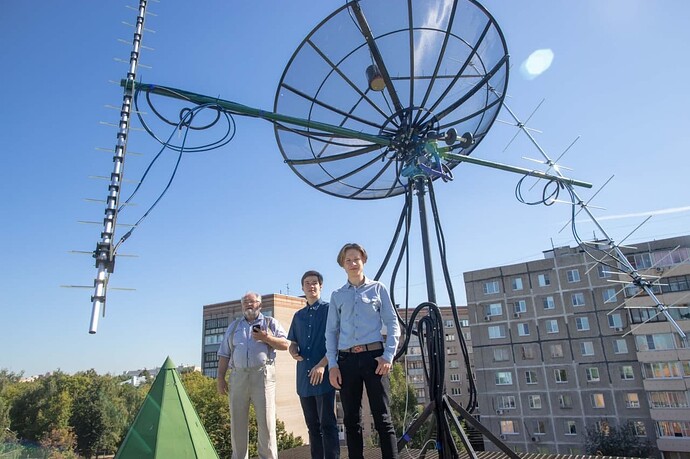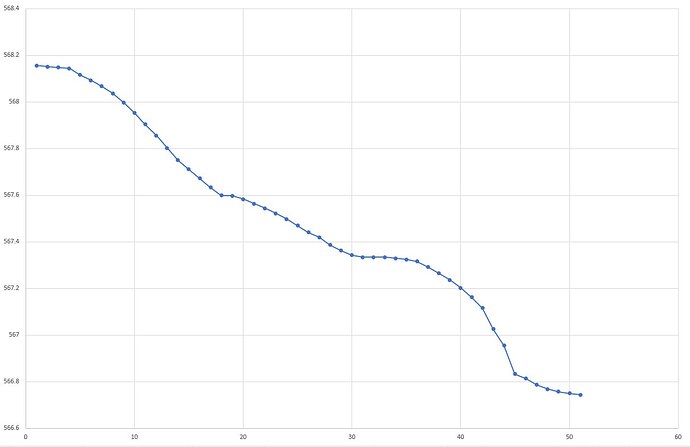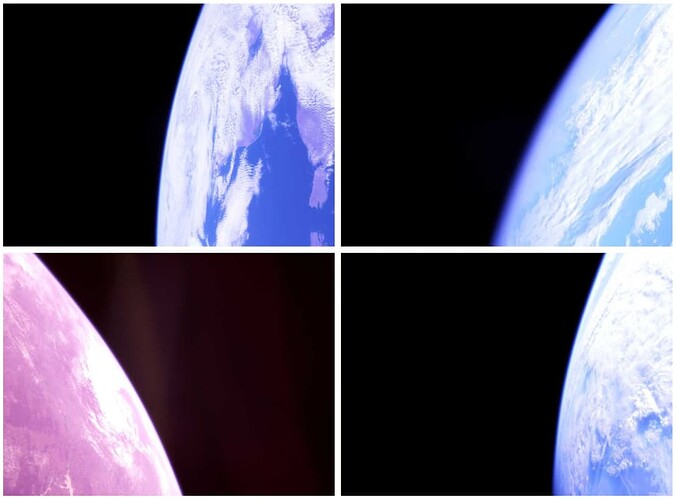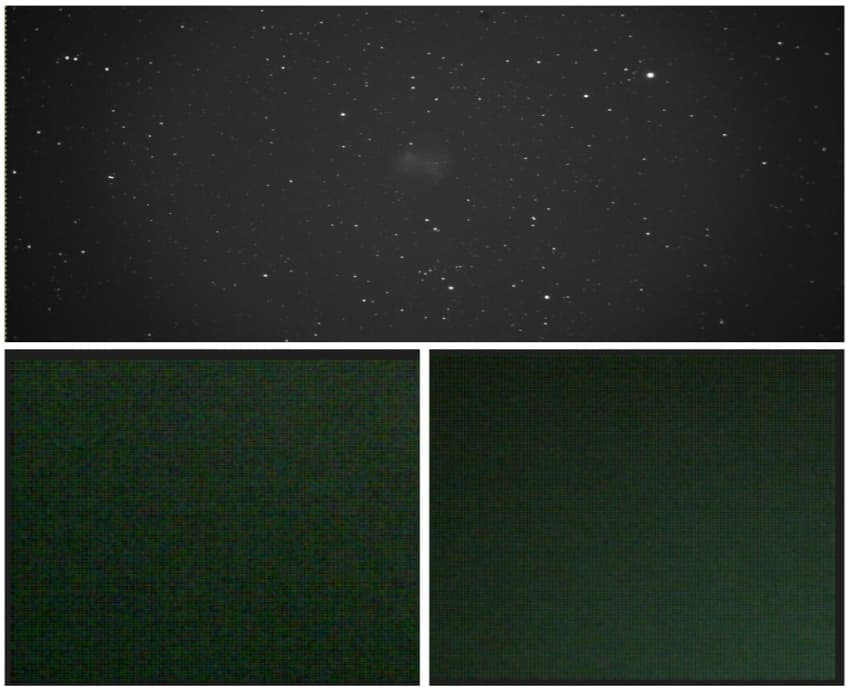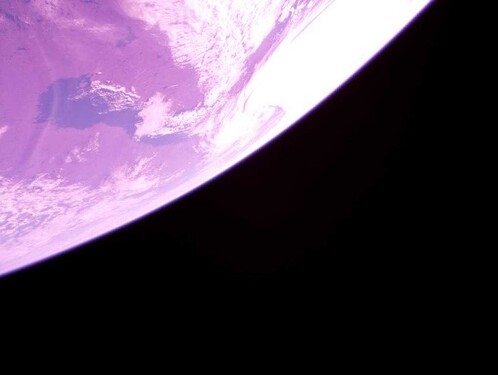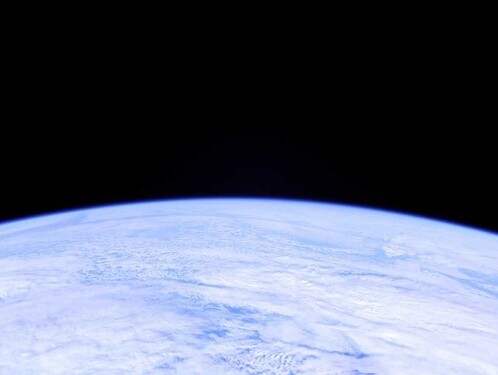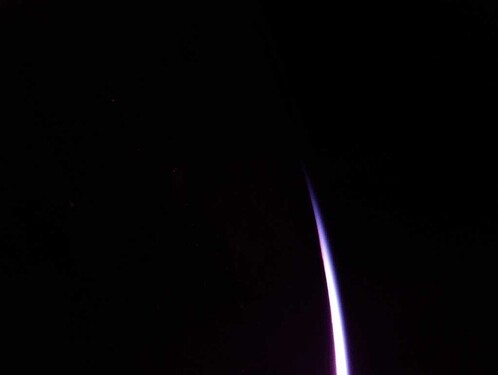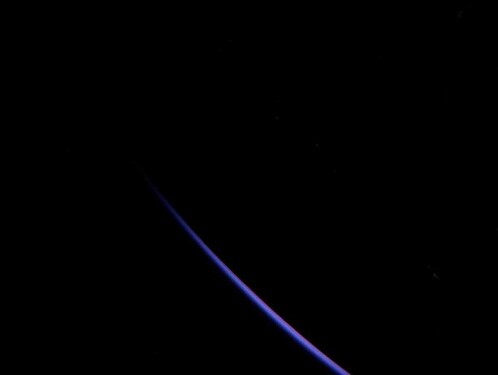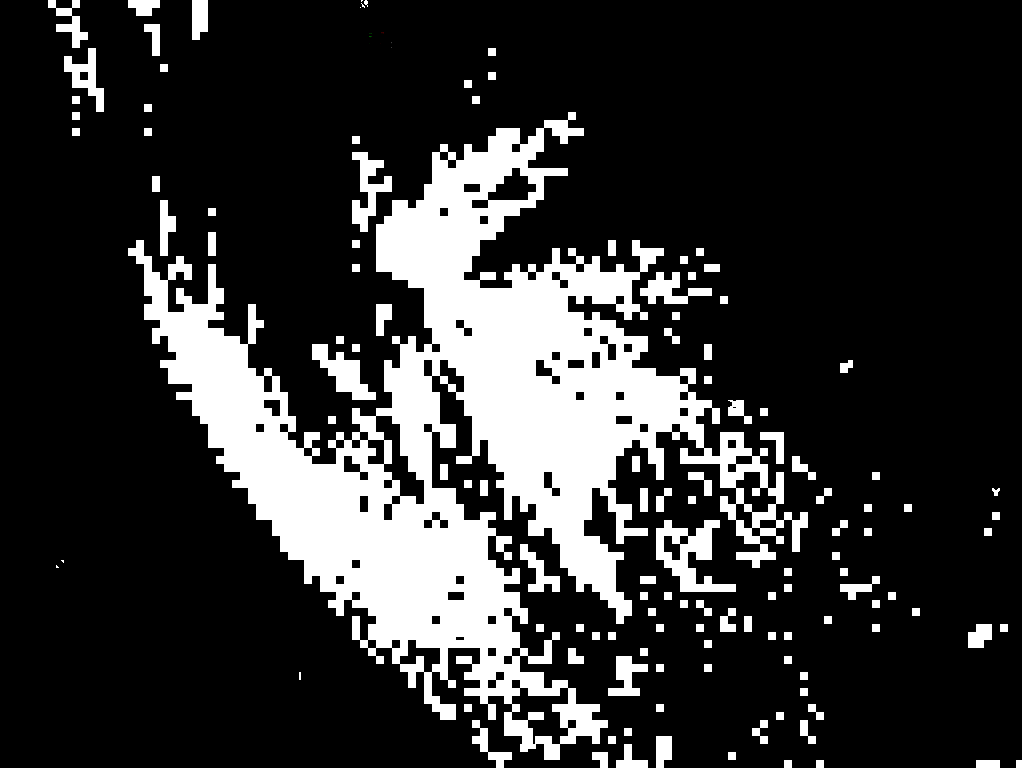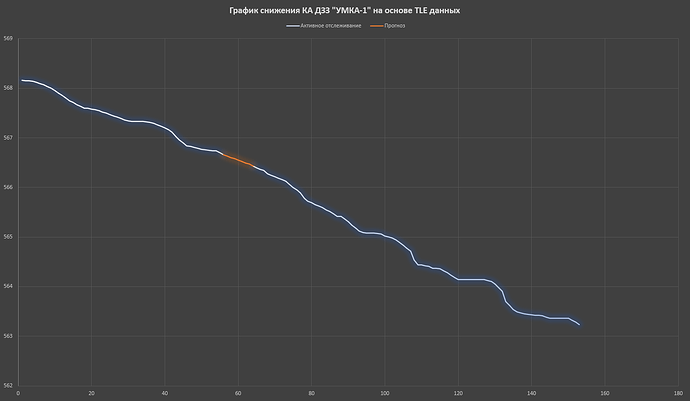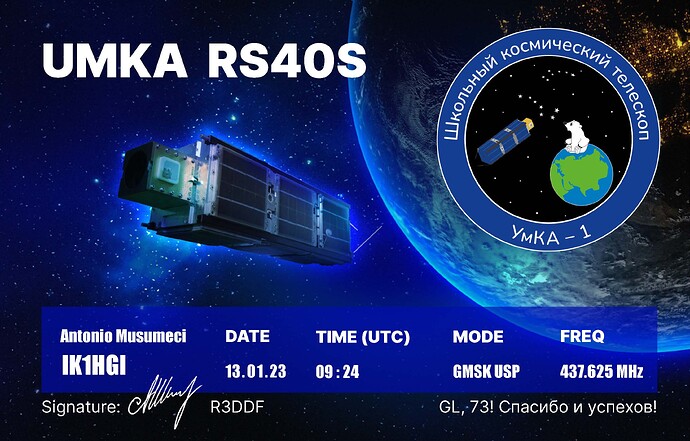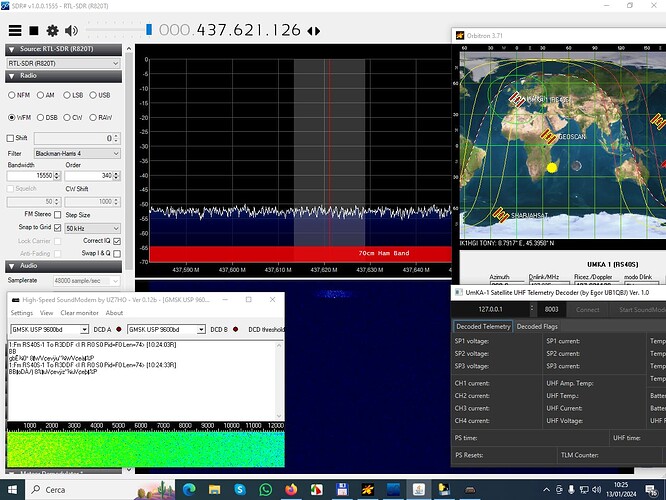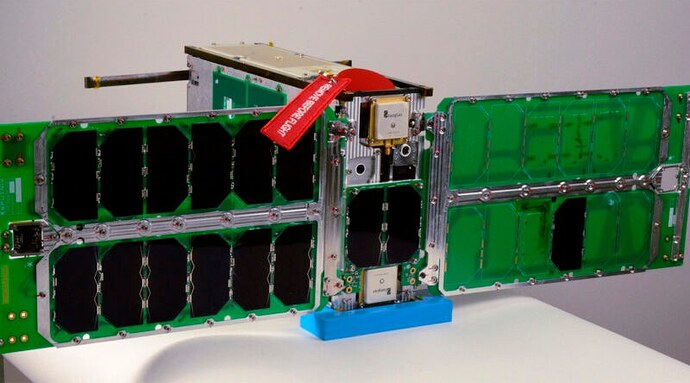Good afternoon, dear @jupitersaturn09.
Please accept my apologies for the long wait for an answer.
In the very near future, we intend to publish a report on the status of the mission and plans for the near future.
I will add that serious difficulties have arisen in the operation of the S-band transmitter.
Thank you for your interest in our mission.
Can you elaborate a bit more on that? Is there any-way we can help?
Hi @ra3ppy!
Thank you so much for replying! I really appreciate it ![]()
Oh no! I’m very sad to hear that there are issues! I hope UmKa-1 will recover soon ![]()
Looking forward to reading the report!
73 de Sasha VE3SVF!
Hello, dear @pierros .
We interact directly with the developer of the S band transmitter. There are probably few people better than him who can understand the problem at the moment. But the help of the amateur radio community will, of course, be needed a little later. When we try to start the S band transmitter again. We will inform you about this later.
Thanks for support! ![]()
Status report on the UmKA-1 (RS40S) orbiting space telescope mission.
Since its launch from the Vostochny Cosmodrome on June 27, 2023 and receipt of the first telemetry, the School Orbital Telescope UmKA-1 (RS40S) was taken for tracking by the school ground control station R3DDF.
Having established communication with the satellite in the first days after its launch into orbit and having made sure that the satellite responded to commands from the ground control station, it was decided to keep monitoring until the temperature of the spacecraft stabilized. At the same time, the software and hardware for working with the spacecraft orbiting the Earth were being mastered.
Antenna complex of the school ground control and control station
July 2 - interference on the main and backup frequencies from ground-based RPS was assessed. It was decided to keep 437.625 MHz as the main frequency of the downlink.
July 4 - work with our satellite began. The format was changed from FSK 2400 to the planned format GMSK USP 2400.
July 12 - performance and general condition of the battery was evaluated.
July 16 - started working with S-band transmitter. During the week there were made several test switches, involved four amateur radio ground stations located in the European part, which monitored the frequency of the S-band transmitter. Problems were identified in the operation of the high-speed S-band transmitter. The monitoring stations, including the control and monitoring station located in school 29 in Podolsk, did not observe the transmission at the specified frequency. At the same time, the payload consumption remained within the design limits.
Since July 18 - in order to determine the cause, began interaction with the manufacturer of high-speed transmitter S-band.
The team of the ground control and monitoring station took measures to restore the operation of the high-speed S-band transmitter, including reducing the speed to 250 kbit. The measures taken did not lead to the desired result.
July 24 - observation of the descent of MKA “UmKA-1 (RS40S)” by the control station UB1QBJ was established.
Schedule of altitude reduction from July 24 to September 16, 2023 MKA “UmKA-1 (RS40S)”
Operation in different formats of telemetry transmission was checked. USP GMSK 9600 was chosen as the main format.
August 1 - the main work with stabilization and pointing of the orbiting telescope began.
August 3 - Successfully received a photograph from the technical camera. It was decided to use the main frequency - 437.625 MHz - to transmit useful data under conditions of unstable operation of the high-speed S-band transmitter to the ground station. A number of experiments on useful data transmission were performed, including the change of format to USP GMSK 19200, preliminary receiving approval from IARU.
Photos from the technical camera of the MC “UmKA-1 (RS40S)”
August 4 - test frames from the telescope were received. As a result of the received images, there was an assumption of incorrect operation of the telescope.
August 12 - subsequent fragments of images received confirmed the fears. From that moment, the priority task of the team was to find out the cause of the problem and search for its solution.
A full-size test frame of the UmKA-1 (RS40S) telescope camera from Earth, before launch (above) and the resulting fragments of images from orbit in August 2023.
August 19 - at the ground control and monitoring station, the S-band irradiators were replaced and their operability was checked on other spacecraft broadcasting in the S-band section.
Until September, work continued on mastering the stabilization and guidance of the orbital telescope UmKA-1 (RS40S). In the process of active work with the spacecraft, a number of other minor problems with the orientation system were identified, which were promptly eliminated.
Since September, the team of the ground control station continues to work with the orbiting telescope.
The program for the transmission of images from the technical camera is being prepared.
SSTV broadcasts are planned. Prepared a diploma program for radio amateurs. QSL program is active.
In October, it is planned to shoot and transmit new images after corrections to the work of the optical telescope.
New attempts will be made to turn on the high-speed S-band transmitter.
As of September 24, 2023, the main systems of the UmKA-1 (RS40S) MCA platform are functioning normally.
The team of the ground control and monitoring station continues to work on restoring the S-band transmitter and optical telescope functionality.
Despite the difficulties encountered, the team has learned very valuable and useful experience that will be taken into account in planning future missions.
The main frequency of the downlink is 437.625 MHz (in use)
Format - USP GMSK 9K6
Backup frequency - 435.825 MHz (not active)
High-speed transmitter frequency - 2402 MHz (not active)
You can read the report in Russian by clicking here.
In the near future, the report will also be published on the mission’s website.
The UMKA-1 School Orbiting Telescope team wishes the community a Happy New Year and Merry Christmas! May all your dreams and wishes be higher and brighter than the stars! And will definitely come true in the new year! ![]()
Mission status report of the orbiting space telescope UMKA-1 (RS40S) for October-December 2023
During October, the main efforts of the ground control centre were focused on trying to restore the operation of the S-band high-speed transmitter, following the recommendations of the high-speed transmitter developers.
Unfortunately, all of the team’s efforts still failed to produce meaningful results.
At the end of November, it was decided to temporarily postpone work on the recovery of the high-speed transmitter and the use of the main payload. The team decided to focus on the education programme.
On 25 November, a request was received from a student of the 1st “G” class of school 1998, Moscow, to conduct an experiment to transmit children’s drawings of astronomical objects from UMKA-1. The proposal was accepted by the team with enthusiasm. The request was approved, and included as an experiment in the mission’s educational programme.
Since December 2, the team of the ground control centre continued to master the orbital control of the and to take pictures from the technical camera. A number of interesting images of the planet were obtained.
On 9 December, the idea to use the technical camera of the satellite for astronomical purposes was implemented. An additional series of images was carried out and the obtained images of the open space area were analysed. The images were labelled as “dark”.
Previously obtained “dark” images, after preliminary processing, contained optical aberrations caused by the angular deflection of a narrow parallel beam of light. These distortions, the team of the orbiting telescope, jokingly called - “Space Bells”.
Optical aberrations also appeared during daytime shooting.

Despite the presence of distortion, quite beautiful compositions were often produced.
16 December.
The team of the ground control centre continued working on the preliminary analysis of the received “dark” images, which finally yielded results.
In the “dark” image below, after preliminary processing, you can see the reflected part of the planet.
Minecraft fans I think would love it. Highly likely))
But the greatest interest, aroused photos of the open section of space with presumably discovered astronomical objects.
It’s up to our team of astronomers to be more precise about what we’ve been able to capture. …Attack ships on fire off the shoulder of Orion… C-beams glitter in the dark near the Tannhäuser Gate…*
20 December.
There was a serious accident of the rotating device of the antenna complex of the R3DDF ground control station.
By joint efforts of the project team, the antenna rotation system is being restored.
At the moment UMKA-1 RS40S is being escorted by space monitoring stations working as part of the EFIR network, which allows receiving data on the current state of our school satellite in orbit.
UB1QBJ station continues to monitor the altitude of the UMKA-1 RS40S spacecraft
In January, 2024, it is planned to analyse the images and adapt the satellite’s technical camera to perform the mission’s astronomical tasks.
For February and March - implementation of the experiment, the preliminary stage of the educational programme for school students and radio amateurs.
At the moment, access to the mail radioamateurumka@school29.ru(not active) is lost .
For QSL requests, the personal mail ra3ppy@yandex.ru (active) is temporarily used.
After sorting the satellite images, the team plans to publish them for free download to everyone.
If the educational project is successfully launched, it will be possible to broadcast low-resolution images via UHF satellite.
I would also like to inform you that during busy work, there may be a brief change of bitrate to 2400 bs, 4800 bs GMSK USP
The main bitrate remains the same - 9600 GMSK USP
The frequency also remains unchanged.
437.625 MHz
Part of the phrase is a quote of a monologue from Blade Runner.*
73! GL!
Hi Aleksey!
Great to see your satellite is functional in orbit, despite the technical difficulties currently faced by the team.
How is imagery downlinked? Is it still via the high-speed 70cm downlink?
Good luck with your mission!
Sasha VE3SVF
tonight I listened to Umka-1 the telemetry was very difficult but I succeeded the first time on this satellite and I have been following it for a while tonight it is a miracle
73 ik1hgi Tony
tonight I listened to Umka-1 the telemetry was very difficult but I succeeded the first time on this satellite and I have been following it for a while tonight it is a miracle thank you I received the QSL from OM RA3PPY Alexey A. Shafiev
Hi, Sasha!
Sorry for the long wait for an answer. A large number of tasks sometimes do not allow me to respond promptly. Yes, UMKA-1 operates on its main frequency of 437.625 MHz 9600 GMSK USP. There is no need to activate the backup frequency at the moment.
Events for schoolchildren, students and radio amateurs are planned for spring and summer. I’ll give you the details here, but a little later. We are waiting for a warm time)
Thank you for your kind wishes and for keeping an interest in the UMKA-1 mission. This is very nice! 73!
Hello RA3PPY , i have uploaded many times my telemetry gmsk UMKA to the r4uab online mailform for a qsl card in pdf back to my email adress , whithout any success , is it possible that the online request systems fails? my call on7ndr , my email adress on qrz.com also … i have uploaded 3 txt file’s to get the qsl card from umka .please send to nicoderoo685@gmail.com
I have send you also email for a request , did you confirm?
i have also request by email to r4uab , no respond?
Hello dear Nico.
Due to a problem with the previous e-mail address, access to it is blocked.
Temporarily I provided a personal e-mail to process applications. I acknowledge receipt of telemetry. I usually respond with a newsletter at the end of each week. I will definitely send you an answer in the evening.
Thank you very much for your interest. And please accept my apologies due to technical problems. The form on the r4uab.ru will be corrected before the weekend. Thank you for drawing attention to the problem.
Thanks dear Aleksey ,
i have gently received the RS40S “UMKA” QSL confirmated from you and say thank you ver much.!o!
we are also interrest in getting telemetry from other russian satellites .
we would appreciate if orbicraft-zorkiy would again transmit some sstv in robot 72 format (as before)
we would try to receive sstv from it…
thanks for your reply here also
good morning group I would like to receive this Orbicraft-Zorkiy satellite which program should I use for its telemetry I have an image thanks
Hello, Tony.
To receive telemetry from Orbicraft-Zorky and others, on this platform (for example UMKA, SIREN and others), Sputnix has specially made a Telemetry Viewer. You can download it for Windows/Linux using the link.
The detailed setup is described here.
But let me remind you once again that Telemetry Viewer works in conjunction with soundmodem.
Yes, the Orbicraft-Zorky satellite is a wonderful satellite. I have a lot of funny and funny stories connected with this satellite)))
Unfortunately, SSTV broadcasts are not expected from him in the near future. But the QSL program works.
But don’t get upset. I can’t say for all the satellites, but UMKA plans to please radio amateurs.
Alexey thanks, for the info hi I don’t have Linux at the moment I have to find HD to install it which my friend Nico learned how to use well, let’s see in the future what I can receive with Linus. (not possible for Windows?) 73 Tony ik1hgi
Tony, it’s also possible for Windows.
If you scroll down the site, there is a list indicating programs and OS platform.

The Linux version of the SPUTNIX Telemetry Viewer brings up an error message on 16.04 as well as on 22.04.
./SX-TLM-Viewer-v217.rc1: symbol lookup error: ./SX-TLM-Viewer-v217.rc1: undefined symbol: _ZdlPvm, version Qt_5
@ra3ppy Aleksey, do you know if SPUTNIX provides the source code so everyone can compile it themselves?
Hi, Daniel.
Unfortunately, I can’t exactly help and tell you right now.
I use the Windows version (7, 10). I had no problems with this version.
I can recommend asking a question here radioamateur@sputnix.ru
